 There’s no question that unintended double success is the sweetest of all. Who wouldn’t want two-fold exposure from groundbreaking commercial messaging which leads to twice the radio success ?
There’s no question that unintended double success is the sweetest of all. Who wouldn’t want two-fold exposure from groundbreaking commercial messaging which leads to twice the radio success ?
That happened over 40 years ago when Coca Cola directed its ad agency wizards to come up with a new twist on their “It’s the Real Thing” slogan. It produced a winning ad campaign and an indelible mark on modern broadcasting. For perhaps the first time, a song originating in a television commercial echoing international peace and harmony hit it BIG coast to coast on America’s — and the world’s — top radio play charts.
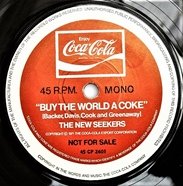 The song’s melody came from a pair of British songwriter/musicians and the lyrics by jingle writers with McCann Erickson, the well-known ad agency that held the Coca Cola advertising account. The resulting song, I’d Like to Buy the World a Coke, became a radio commercial, sung by the New Seekers — a popular English group — which got wide on-air play in 1970. Then, in a masterful move, the track was used in what became known as the famed hilltop TV ad a year later. It showed a large, multicultural group of teens and 20-year-olds lip syncing about hope and love – while clearly holding bottles of Coca Cola. Wham ! Talk about impact.
The song’s melody came from a pair of British songwriter/musicians and the lyrics by jingle writers with McCann Erickson, the well-known ad agency that held the Coca Cola advertising account. The resulting song, I’d Like to Buy the World a Coke, became a radio commercial, sung by the New Seekers — a popular English group — which got wide on-air play in 1970. Then, in a masterful move, the track was used in what became known as the famed hilltop TV ad a year later. It showed a large, multicultural group of teens and 20-year-olds lip syncing about hope and love – while clearly holding bottles of Coca Cola. Wham ! Talk about impact.
Below is the original “Buy the World a Coke” TV ad from July, 1971 (duration 1 minute)
The Coke ”songvertisement” rolled up production costs triple its original budget, making it the most costly ever produced to that time. But because Coca Cola stuck with it, the commercial was an instant sensation, igniting a chain of events nearly as famous as its song.
 Coca Cola’s Atlanta headquarters received 100,000 letters raving about the song. So Coke released it on a 45 rpm record. But radio programmers were unable to satisfy listener frenzy to hear more of the short, one-minute song. Djs appealed to its producers to redo the song in longer form without the commercial mention of Coca Cola.
Coca Cola’s Atlanta headquarters received 100,000 letters raving about the song. So Coke released it on a 45 rpm record. But radio programmers were unable to satisfy listener frenzy to hear more of the short, one-minute song. Djs appealed to its producers to redo the song in longer form without the commercial mention of Coca Cola.
.
Coca Cola agreed, assigning the task to the McCann Erickson team that penned the song’s early beginning (when the song’s idea man was grounded and fogged in for a time at Shannon, Ireland airport 18 months earlier). The ad agency’s creative director Bill Backer and his key jingle/songwriter Billy Davis re-worked the song, added more verses and removed the Coca Cola references.


Retitled I’d Like to Teach the World to Sing, the song was intended for quick recording by the New Seekers, the group also on the radio and TV spots. The idea was to get it quickly released to cash in on the song’s sky high public appeal. But there was a hangup. The New Seekers were booked on a fall tour and declined. Backer turned to Al Ham, another producer who quickly assembled a stand-in group comprised of his wife, daughter and seven others, cleverly named the Hillside Singers, to match the TV ad’s shooting scene.
It was a huge gamble since Ham’s wife Mary Mayo was the only recognized singer in a new, unknown combo which was trying to sound like the New Seekers. Just days after the Hillside Singers finished recording, the New Seekers hustled to a recording studio to cut their own version. Both were released by different record labels in November of 1971 – and the race was on for radio air play.
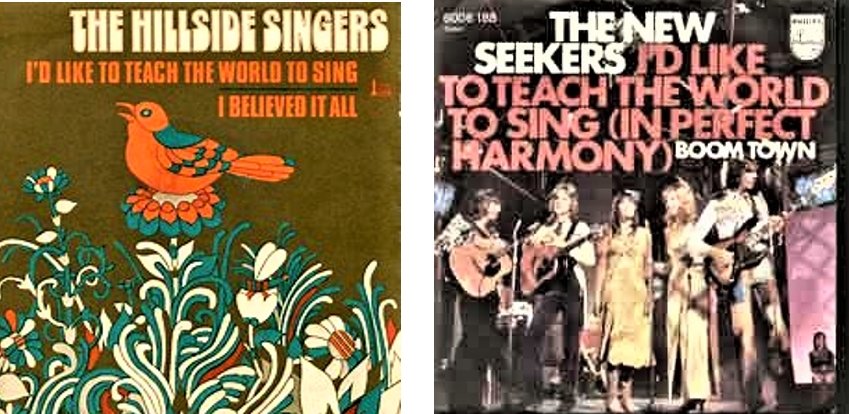
Clips of the single versions of ‘I’d Like to Teach the World to Sing’ – Hillside Singers first, then New Seekers (1:57 run time)
The song’s competing renditions each enjoyed near three-month runs on Billboard’s Hot 100, the Hillside version reaching number 13 (number 5 on Adult Contemporary). The New Seekers did even better, peaking at the Hot 100’s number 7 spot and the group ultimately claiming their rendition sold more than 10 million copies as it hit number 1 in the United Kingdom and Japan. It ranked as Great Britain’s number 5 song for all of 1972, far better than Billboard’s U.S. rank of number 93 for the year. (The Hillside Singers’ version was number 97 for the year.) Both records eventually gained gold certification.
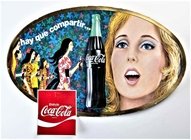 The songvertisement ignited huge excitement in the advertising world. Radio music directors and most music critics were impressed. And, of course, Coca Cola was ecstatic. (The soft drink producer reportedly donated the first $80,000 in record royalties to UNICEF — the United Nations International Children’s Emergency Fund.) Cocoa Cola not only scored big with the ad’s initial impact, but also the equally important residual product-recollection factor (not to mention the repetition) over the months two versions of the song were on the radio. That was another double win.
The songvertisement ignited huge excitement in the advertising world. Radio music directors and most music critics were impressed. And, of course, Coca Cola was ecstatic. (The soft drink producer reportedly donated the first $80,000 in record royalties to UNICEF — the United Nations International Children’s Emergency Fund.) Cocoa Cola not only scored big with the ad’s initial impact, but also the equally important residual product-recollection factor (not to mention the repetition) over the months two versions of the song were on the radio. That was another double win.
 The song’s international appeal – a marketing target Coca Cola had focused on – was a key hallmark of its success. sheet music sales for I’d Like to Teach the World to Sing continue around the world a half century after it first hit the airwaves.
The song’s international appeal – a marketing target Coca Cola had focused on – was a key hallmark of its success. sheet music sales for I’d Like to Teach the World to Sing continue around the world a half century after it first hit the airwaves.
The commercial’s international flavor was applauded by most nations where the ad was broadcast. But one, South Africa, only wanted to show a version without black actors. Coca Cola, long feuding with the South African government over its apartheid issue, refused. By the mid-1980s Coke had eliminated its investments there, cutting all ties with South Africa, which ended its apartheid policies in 1990.
Advertising surveys show it was one of the 10 most  popular commercials ever. Probably the biggest hand in the song’s development and success belonged to Bill Backer, credited for numerous Coca Cola Clio Awards over the years. The famous hilltop ad topped them all.
popular commercials ever. Probably the biggest hand in the song’s development and success belonged to Bill Backer, credited for numerous Coca Cola Clio Awards over the years. The famous hilltop ad topped them all.
Over the years, the commercial was reproduced for broadcast several times, including a 1990 reunion take shown during Superbowl XXIV featuring the actual 1971 on-camera lip sync group with their children. The original ‘71 ad also gained renewed interest in 2015 when shown in the final episode of the “Mad Men” TV series.
 A lot’s been written and said – some of it overstated – about the commercial and its song’s unprecedented significance in American broadcasting history. Significant? Yes. But unprecedented ? Probably not. There have been a number of commercial-based jingles and songs that later charted the country’s national music surveys. A couple of those will be featured in other postings.
A lot’s been written and said – some of it overstated – about the commercial and its song’s unprecedented significance in American broadcasting history. Significant? Yes. But unprecedented ? Probably not. There have been a number of commercial-based jingles and songs that later charted the country’s national music surveys. A couple of those will be featured in other postings.
But to this day no one denies the groundbreaking impact of linking a commercial product with a powerful social message, and the resulting TV and radio exposure that boosted two versions of the ad’s signature song to international stardom on popular music surveys.
Coke’s Hilltop TV ad didn’t come easily. The coke admen organizers called it the “first united chorus of the world.” But it nearly came unglued several times, nearly preventing the commercial from ever happening.
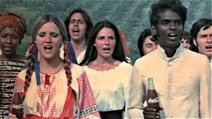 It required three attempts in two European countries to shoot the one-minute commercial in late March and April of 1971. The work was hampered by bad weather, sometimes temperamental young lip syncing actors and huge cost overruns. The saving grace likely was Bill Backer’s undying passion for it, plus his previous proven commercial success and solid longstanding relationships with key Coca Cola execs.
It required three attempts in two European countries to shoot the one-minute commercial in late March and April of 1971. The work was hampered by bad weather, sometimes temperamental young lip syncing actors and huge cost overruns. The saving grace likely was Bill Backer’s undying passion for it, plus his previous proven commercial success and solid longstanding relationships with key Coca Cola execs.
The first attempt was aborted after three days of rainy weather near England’s famed Cliffs of Dover. The shoot’s producers had brought in hundreds of British school kids and more than 60 young adults to be the star lip syncers. They all went home drenched and unhappy. The production crew then moved to Italy at an area not far from Rome. As many as 1,200 hillside extras and a new cadre of close-up principals were hired. The weather was only slightly better for the high-angle helicopter shots and resulted in marginal on-film images later determined unusable.
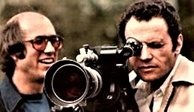
That just about fried the project for Backer, who had to go back to the drawing board, his $100,000 budget exhausted. His impassioned plea to the Coca Cola ad account supervisor surprisingly led to a new $250,000 budget, the most ever spent on a single commercial in those days.
With better weather, the shooting returned to the same Italian hillside, but this time using an Italian film crew and about 500 young people from schools and embassies in Rome. A last-minute replacement had to be found for the closeup lead female when she told producers she was about to elope and couldn’t finish the shoot. Those closeups of the lip syncing young stars, decked out in their native country outfits, were shot at a Rome racetrack, separate from the full chorus of 200 filmed on the hillside location. More than 20 nations were represented in the shoot, an overall advertising industry milestone.
__ __ __ __ __
 Al Ham, the producer who brought the Hillside Singers into the story, later created a fairly successful syndicated radio format called “Music of Your Life.” Seattle’s KIXI had what some considered an unsuccessful run with that format, laying off nearly all on-air staff in 2006 in favor of the satellite programming. The move produced an outcry from the station’s long-time loyal listener base. KIXI returned to local programming in 2009. Previous owner Wally Nelskog had experimented with a similar adult-standards automated format in the 1980s. In recent years KIXI has largely been voice-track automated.
Al Ham, the producer who brought the Hillside Singers into the story, later created a fairly successful syndicated radio format called “Music of Your Life.” Seattle’s KIXI had what some considered an unsuccessful run with that format, laying off nearly all on-air staff in 2006 in favor of the satellite programming. The move produced an outcry from the station’s long-time loyal listener base. KIXI returned to local programming in 2009. Previous owner Wally Nelskog had experimented with a similar adult-standards automated format in the 1980s. In recent years KIXI has largely been voice-track automated.

Some comments may be held for moderation. (New users)